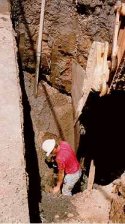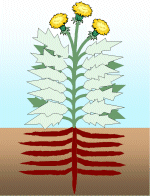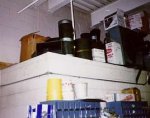Before we study identifying, investigating and controlling hazards in the workplace, it's important to know how OSHA defines the term. A hazard is:
I'll bet if you look around your workplace, you'll be able to locate a few hazardous conditions or work practices without too much trouble. Did you know that at any time an OSHA inspector could announce his or her presence at your corporate front door to begin a comprehensive inspection. What would they find? What do they look for? Now, if you used the same inspection strategy as an inspector, wouldn't that be smart? Well, that's what I'm going to show you in this module!
To help identify workplace hazards it's useful to categorize them into easy-to-remember categories. The first three categories represent hazardous conditions that, according to SAIF Corporation (Oregon), a major workers compensation insurer, account for only 3% of all workplace accidents. The fourth category describes behaviors in the workplace which may be contribute up to 95% of all workplace accidents. All four categories represent the symptoms pointing to underlying safety management system weaknesses. They also represent the surface causes of accidents once they occur. See more below on surface causes.
To remember the four hazard areas, just remember the acronym, MEEP, for Materials, Equipment, Environment, and People. Let's review these four categories.
OSHA has developed OSHA Hazard Awareness Advisor, an excellent software program to assist in identifying hazards in your workplace. Check it out.
To identify and control hazards in the workplace, two basic strategies are used. First, and most common is the walkaround inspection. Now, you probably have participated in a safety inspection, or at least have watched others conduct one.
By it's very nature, the walkaround inspection is ineffective in uncovering unsafe work practices because most inspectors do not take enough time to effectively analyze individual task procedures. Usually the inspectors walk into an area, look up...look down...look all around...possibly ask a few questions, and move on to the next area. Consequently, the safety inspection is effective in uncovering approximately 3% of the causes for workplace accidents. Isn't it possible to inspect a workplace on a Monday, and then experience a fatality on Tuesday as a result of an unsafe work practice which was not uncovered the day before?

A walkaround inspection of this jobsite was completed just 30 minutes prior to this picture being taken. Did it catch this unsafe practice? This illustrates the major weakness of the inspection process. The Job Hazard Analysis can be the answer to this weakness. It uncovers unsafe work procedures as well as hazardous conditions because sufficient time is given to the analysis of one unique task. A joint supervisor/employee JHA uses the following steps:

When investigating hazards discovered in a walkaround inspection or JHA, it's important that you uncover the root causes that have allowed those hazards to exist in the workplace. Taking this approach to hazard investigation is called root cause analysis.
Check out the well-known "accident weed" to the right.
The flower represents the injury which is caused an excessive amount of energy from an outside source to the body. This is called the direct cause of the accident.
The leaves of the weed represent hazardous conditions and unsafe work practices in the workplace. Conditions and/or practices are typically called the surface or indirect causes of an accident.
The roots of the weed represent management's effort to maintain a safe and healthful workplace, safety policies, safety supervision, safety training, and enforcement of safety rules. Think of these as management controls which pre-exist every hazardous condition, unsafe work practice, and accident. Inadequate or missing system components represent the root causes for accidents in the workplace. System weaknesses may include programs, policies, plans, processes and procedures (remember the "5 P's") in any or all of the seven element areas of the safety management system. Root causes may feed and actually promote or nurture hazardous conditions and unsafe work practices.
Research findings indicate hazardous conditions, alone, represent only about 3% of the causes for accidents in the workplace, while unsafe behaviors make up about 95% of the causes for accidents. Consequently, about 98% of all workplace accidents are ultimate caused by a combination of inadequate safety management system components, under the control of management, that result in hazardous conditions and/or unsafe work practices.

You are conducting a walkaround safety inspection when you notice the guardrail along an elevated platform area is missing. As you now understand, the missing guardrail represents a hazardous condition and would be considered a surface cause if an accident occurred. But it also represents a symptom of a deeper problem...a root cause...a system weakness: What might that be?
To make sure the guardrail gets replaced, and remains in place, you must always consider and correct the system weaknesses that allowed the hazardous condition in the first place.
Source: OSHAcademy
Copyright ©2000-2015 Geigle Safety Group, Inc. All rights reserved. Federal copyright prohibits unauthorized reproduction by any means without permission. Students may reproduce materials for personal study. Disclaimer: This material is for training purposes only to inform the reader of occupational safety and health best practices and general compliance requirement and is not a substitute for provisions of the OSH Act of 1970 or any governmental regulatory agency. CertiSafety is a division of Geigle Safety Group, Inc., and is not connected or affiliated with the U.S. Department of Labor (DOL), or the Occupational Safety and Health Administration (OSHA).